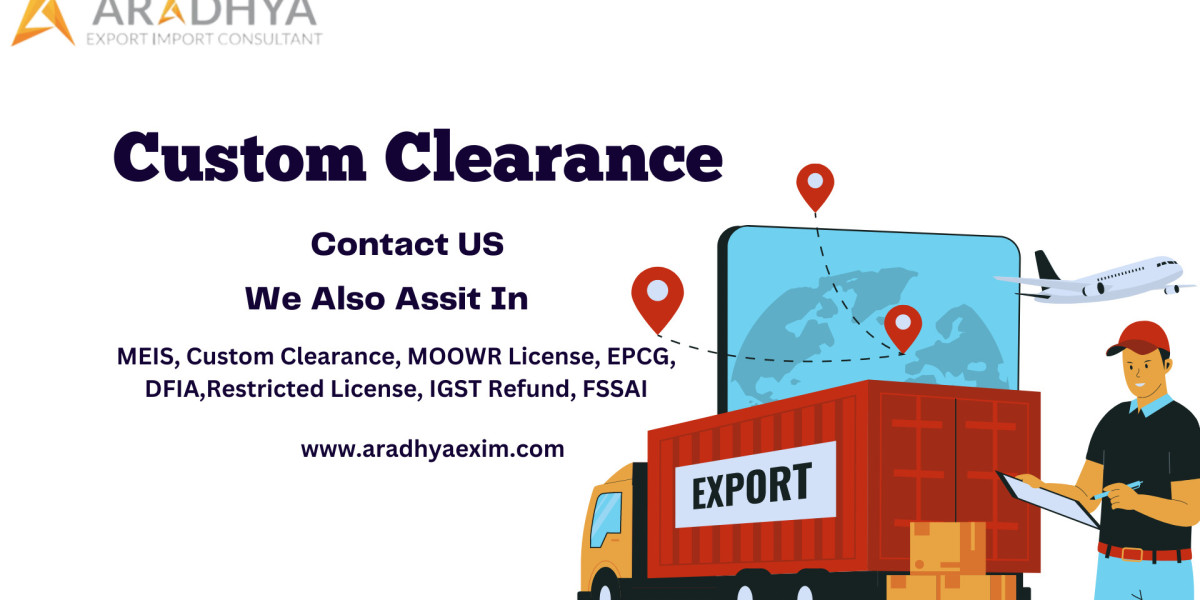Custom clearance is a critical process in international trade, ensuring that goods being imported or exported comply with the legal requirements of the respective countries. Whether you are an exporter or importer, understanding the custom clearance process is essential to avoid delays, penalties, and ensure smooth transactions.
What is Custom Clearance?
Custom clearance is the process through which goods pass through customs to enter or leave a country. It involves submitting necessary documentation, paying duties and taxes, and undergoing inspections to ensure that the goods meet all regulatory requirements. Custom clearance must be completed before the goods can be released for further transport or delivery.
Key Steps in Custom Clearance
Document Submission: The first step in custom clearance is the submission of the required documents to the customs authorities. Common documents include the bill of lading, commercial invoice, packing list, shipping bill, and any relevant certificates (e.g., origin, quality).
Customs Duty Payment: Depending on the nature of the goods and their classification under the Harmonized System (HS) codes, customs duties and taxes may be levied. These must be paid to clear the goods.
Inspection and Assessment: Customs authorities may inspect the goods to verify that the declared value, quantity, and quality match the documentation. This step ensures that there are no discrepancies or violations of regulations.
Customs Release: Once the documentation is verified, duties are paid, and inspections are complete, customs will release the goods for delivery or further transportation.
Why is Custom Clearance Important?
Custom clearance is crucial because it ensures compliance with the importing or exporting country’s laws and regulations. Without proper clearance, goods can be held at the port, leading to delays, additional costs, and potential legal issues. For exporters and importers, efficient custom clearance is essential to maintaining the flow of goods and meeting customer expectations.
Common Challenges in Custom Clearance
- Incomplete Documentation: Missing or incorrect documentation can lead to delays in the clearance process.
- Misclassification of Goods: Incorrect classification of goods under HS codes can result in incorrect duty payments, leading to penalties.
- Delays in Duty Payment: Delays in paying customs duties can hold up the clearance process and incur additional storage costs.
- Compliance Issues: Non-compliance with regulatory requirements, such as failing to meet safety or environmental standards, can result in goods being rejected or confiscated.
Tips for Smooth Custom Clearance
- Accurate Documentation: Ensure that all required documents are accurate and complete before submission to customs authorities.
- Timely Payment of Duties: Pay customs duties promptly to avoid delays in the clearance process.
- Proper Classification: Accurately classify your goods under the correct HS codes to ensure the correct duties are applied.
- Stay Informed: Keep up to date with the latest customs regulations and requirements for the countries you are dealing with.
Conclusion
Custom clearance is a vital part of international trade, ensuring that goods comply with regulations and reach their destination without unnecessary delays. By understanding the steps involved, preparing accurate documentation, and staying compliant with customs regulations, exporters and importers can navigate the custom clearance process efficiently and avoid common pitfalls.
Best Custom Clearance Agents in Delhi
